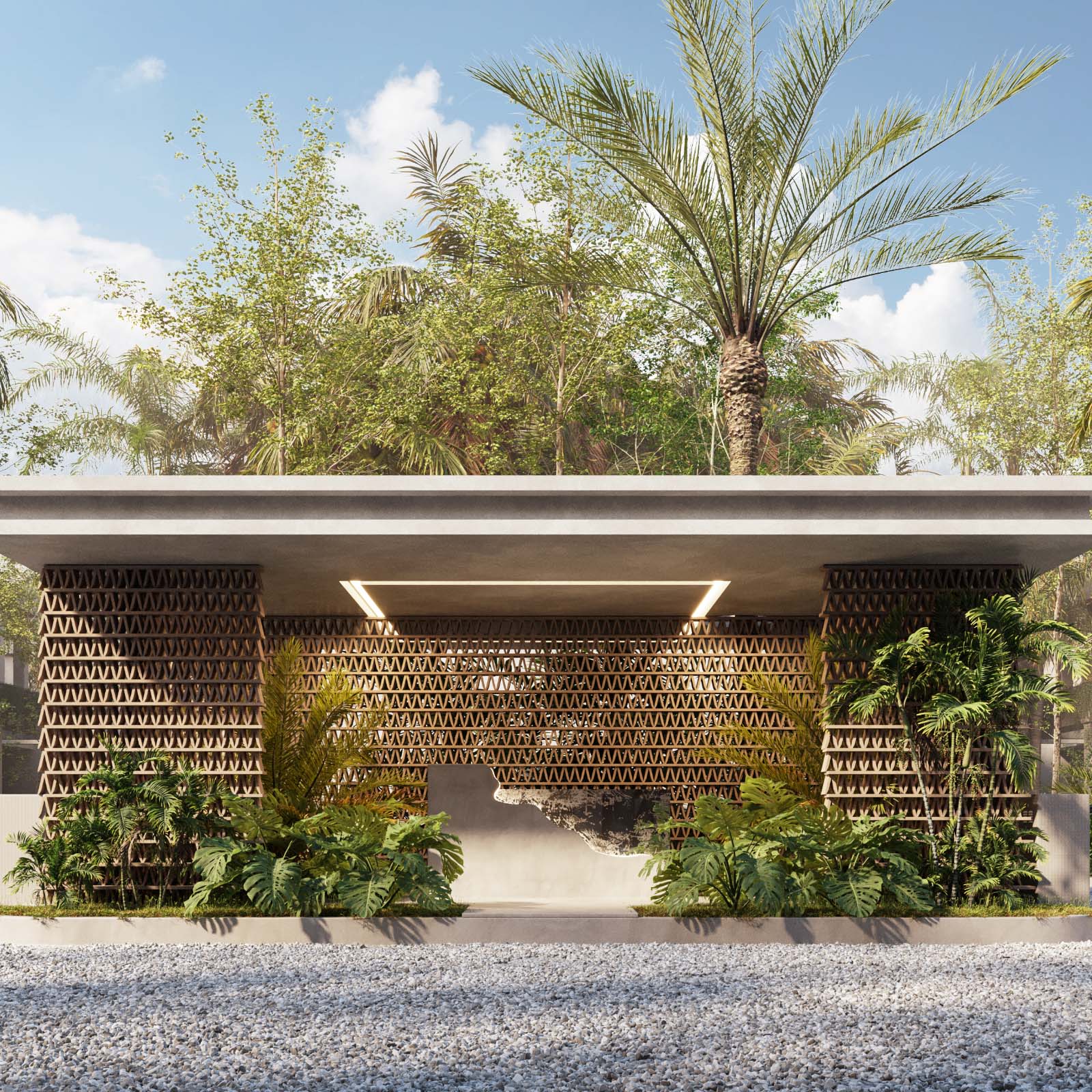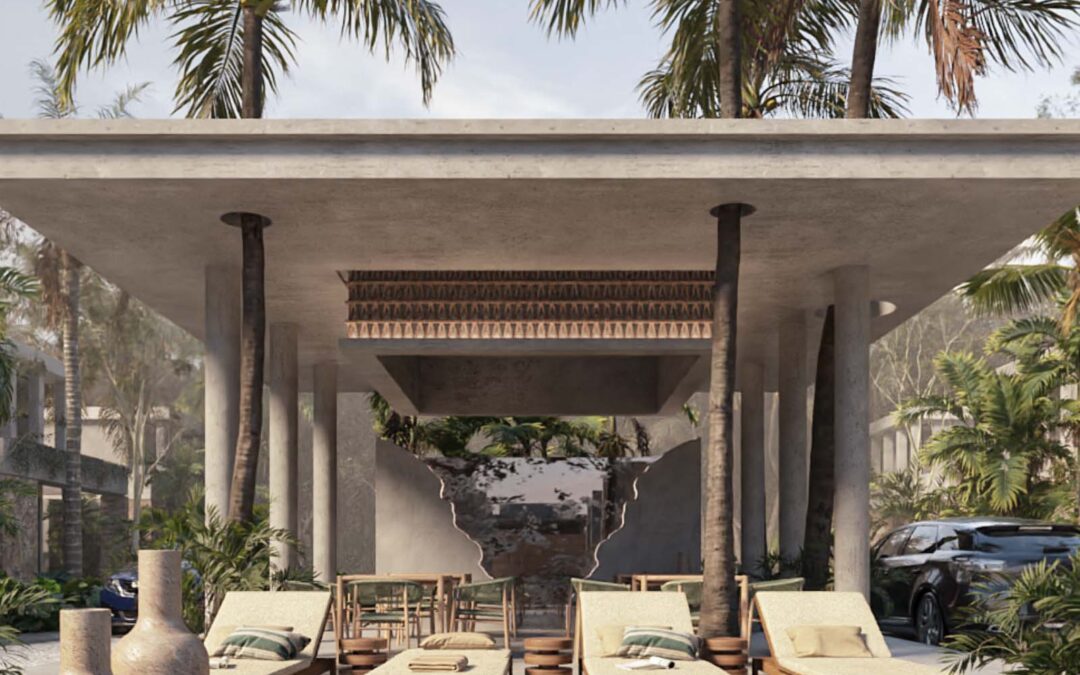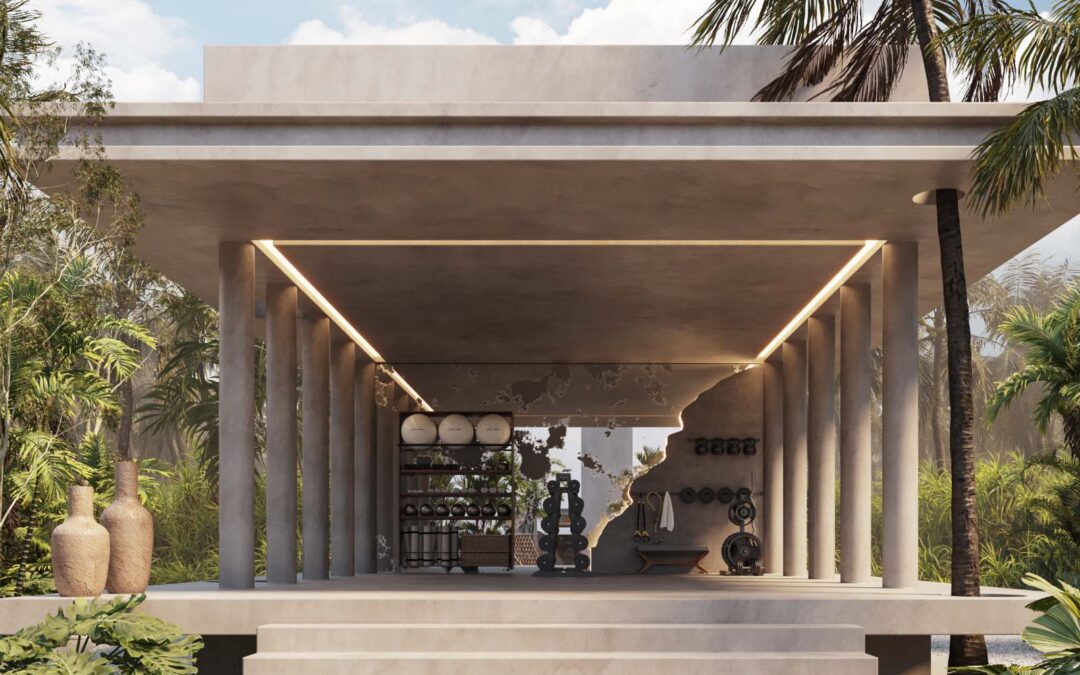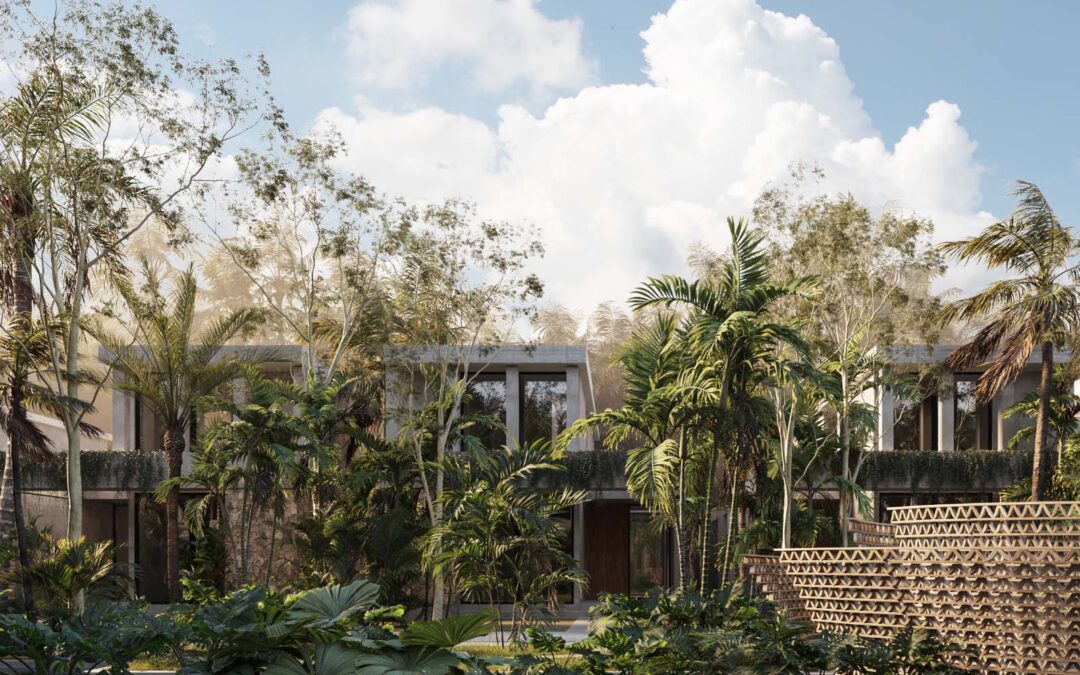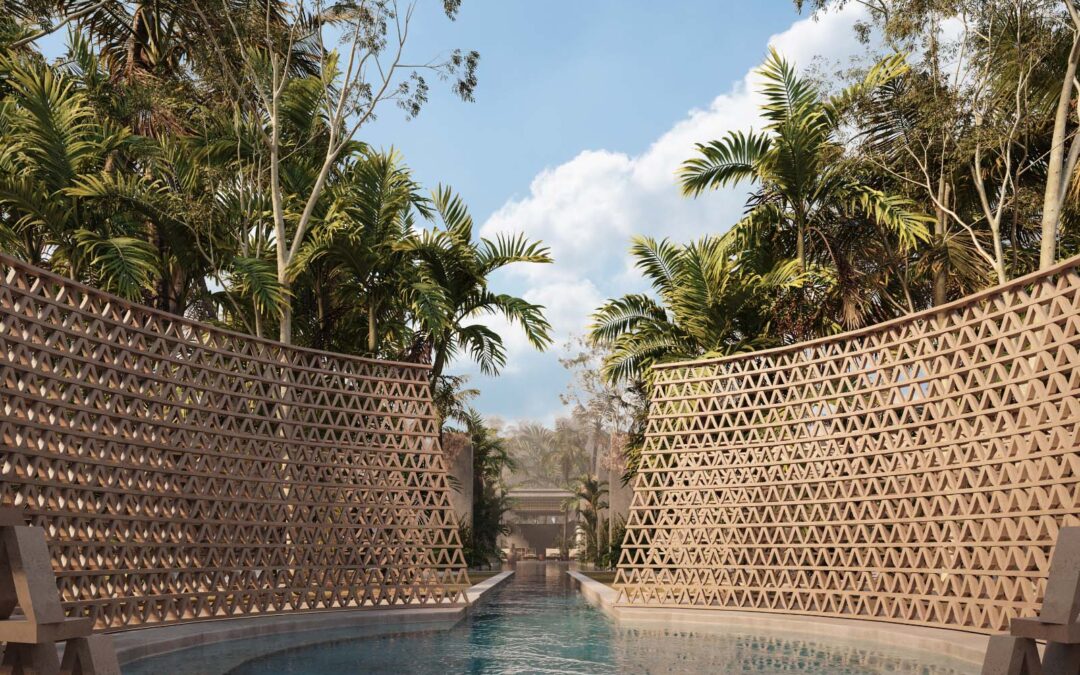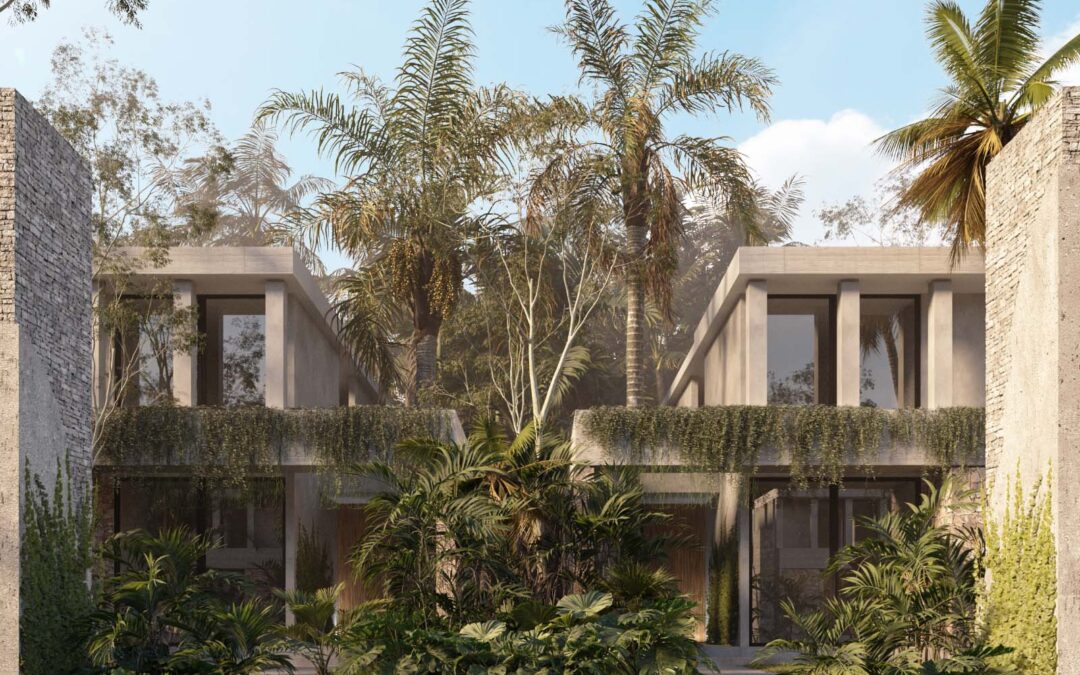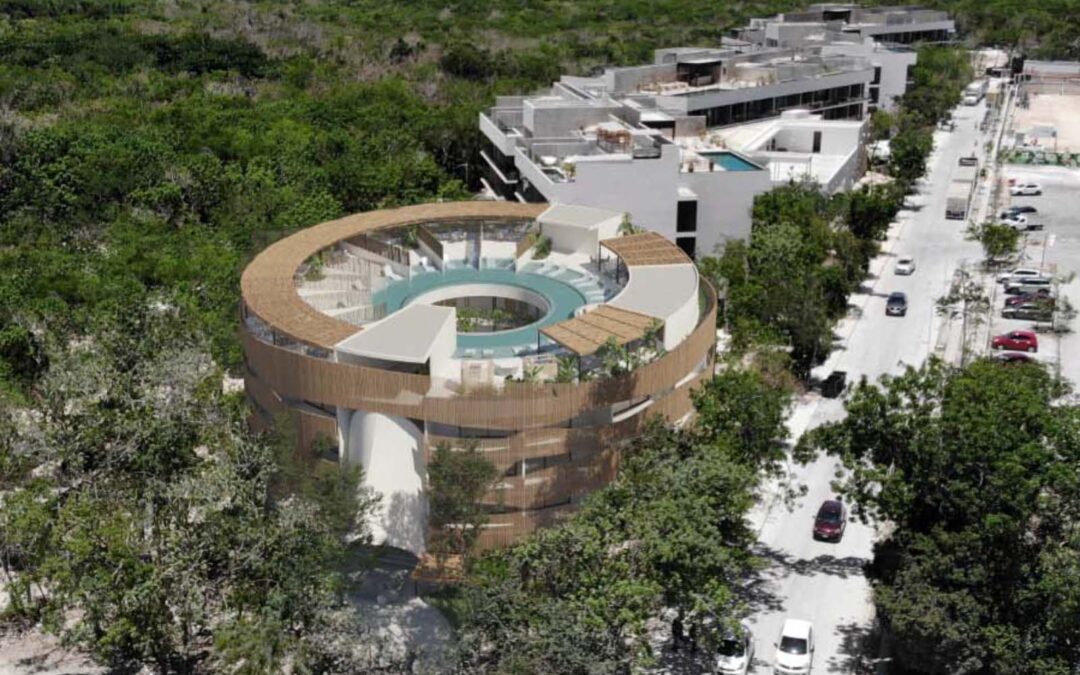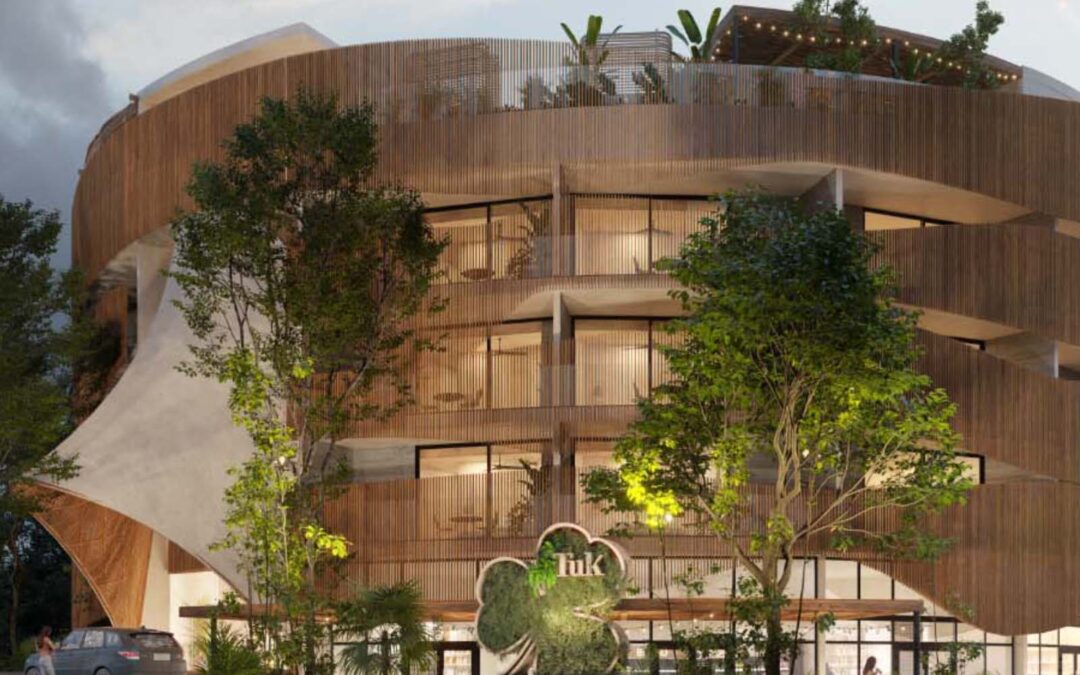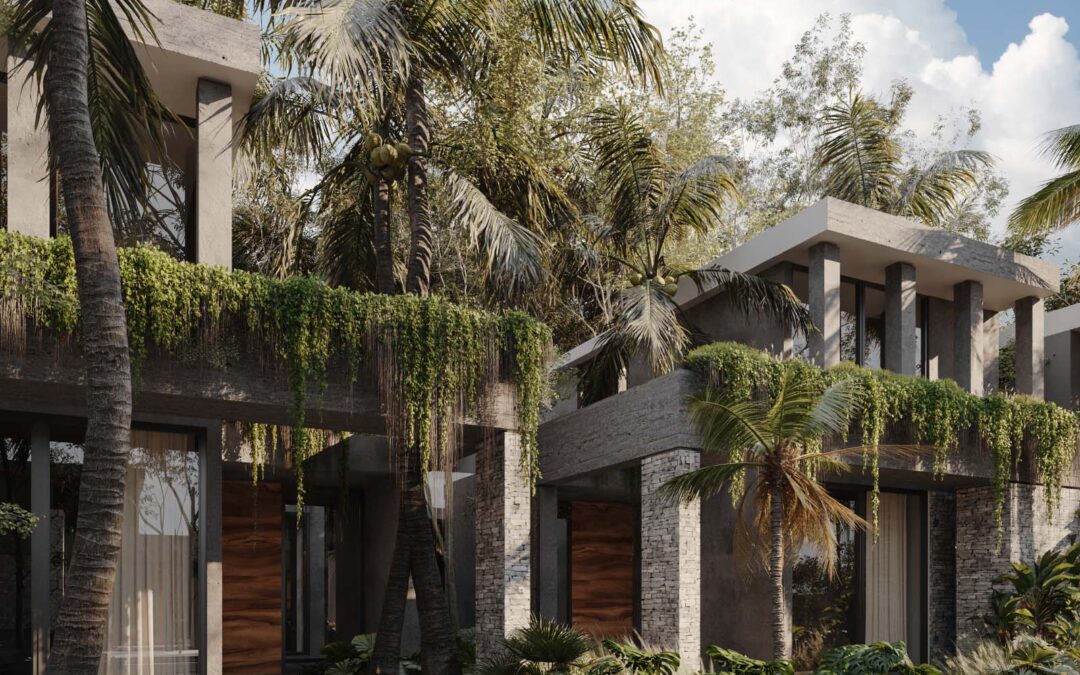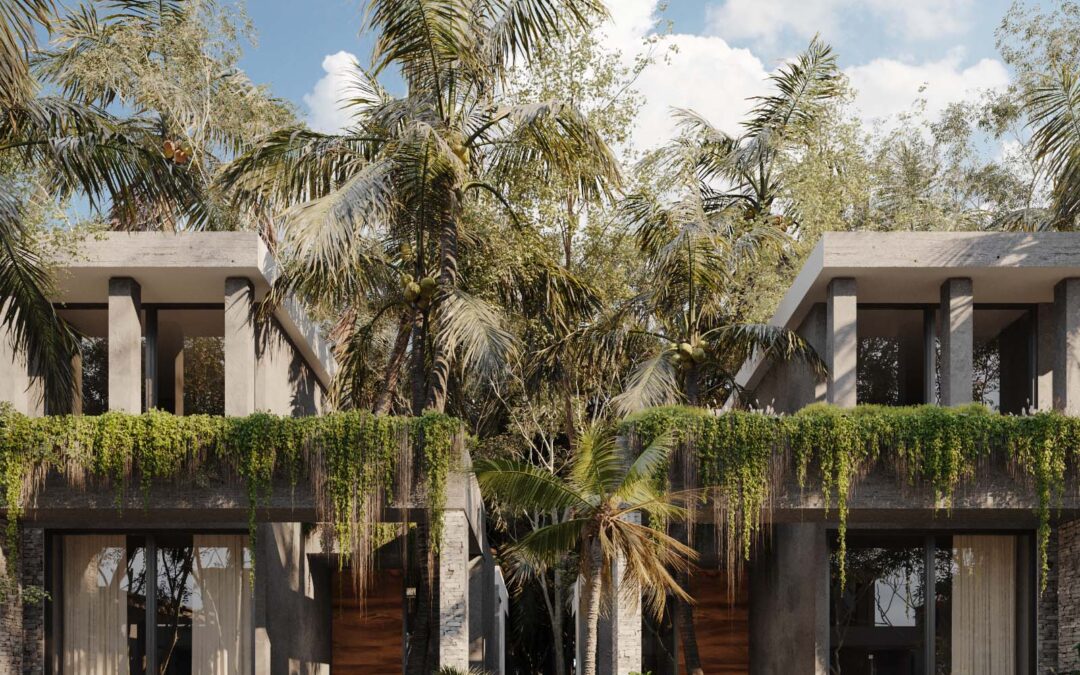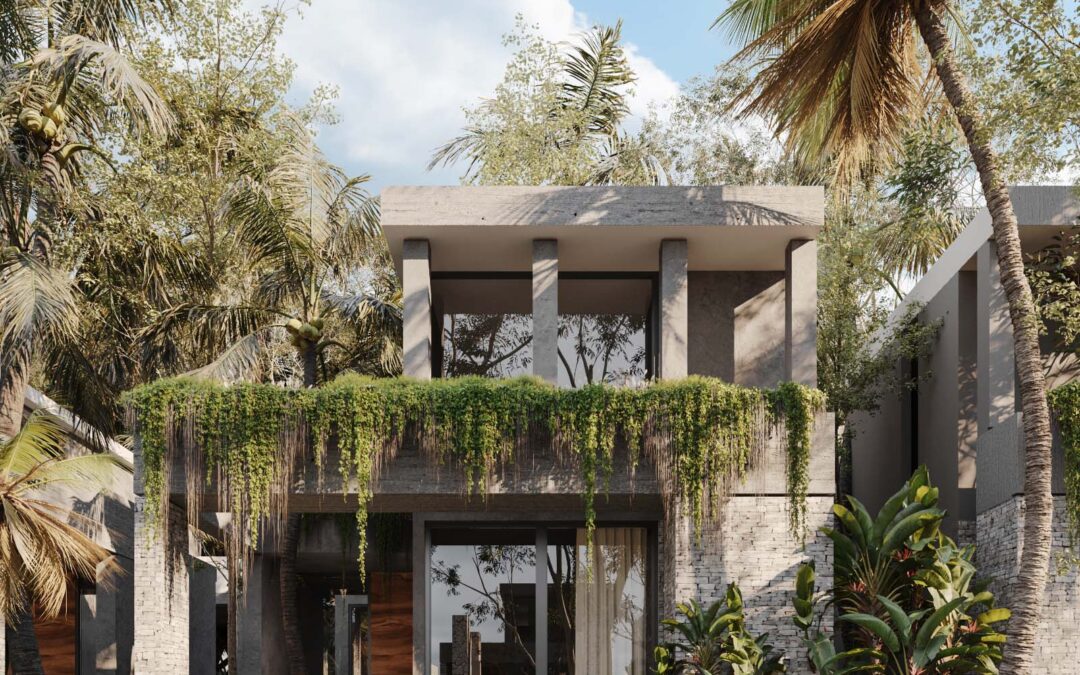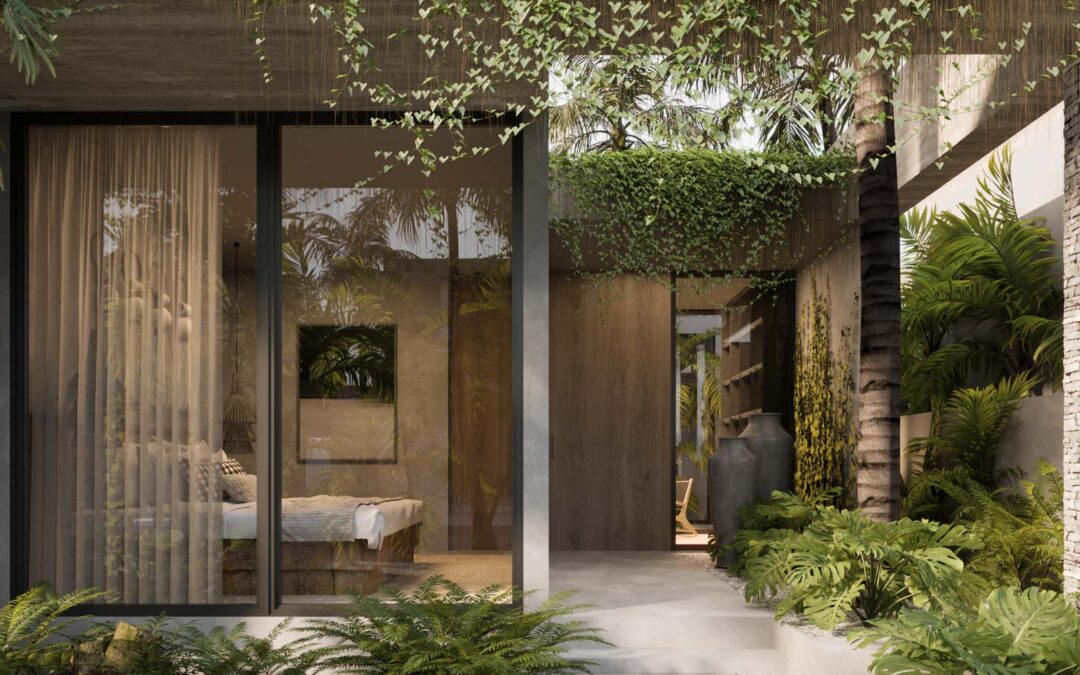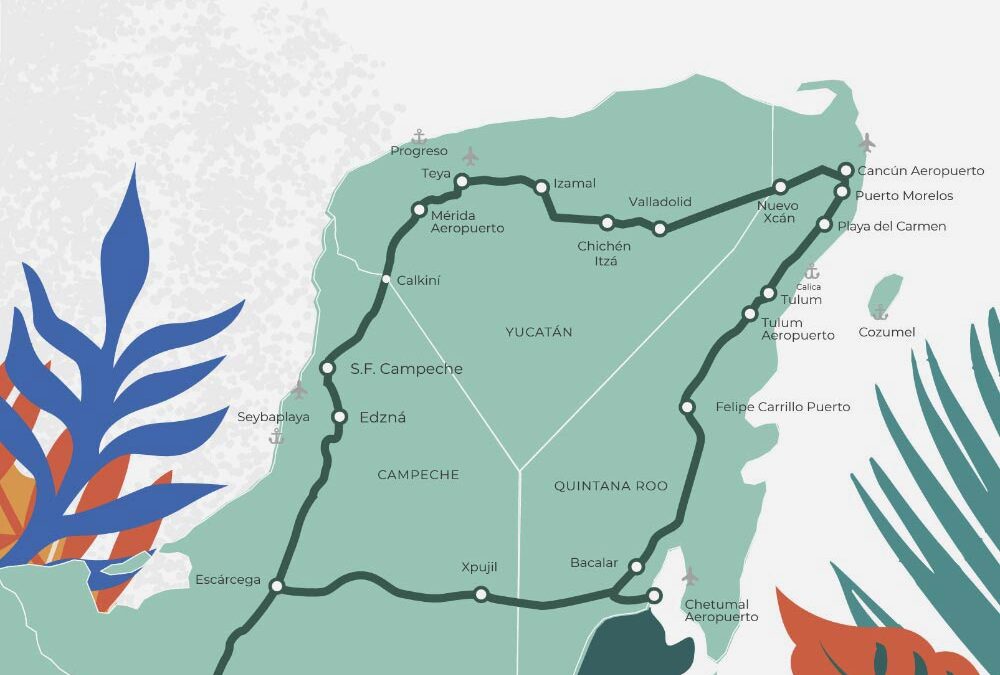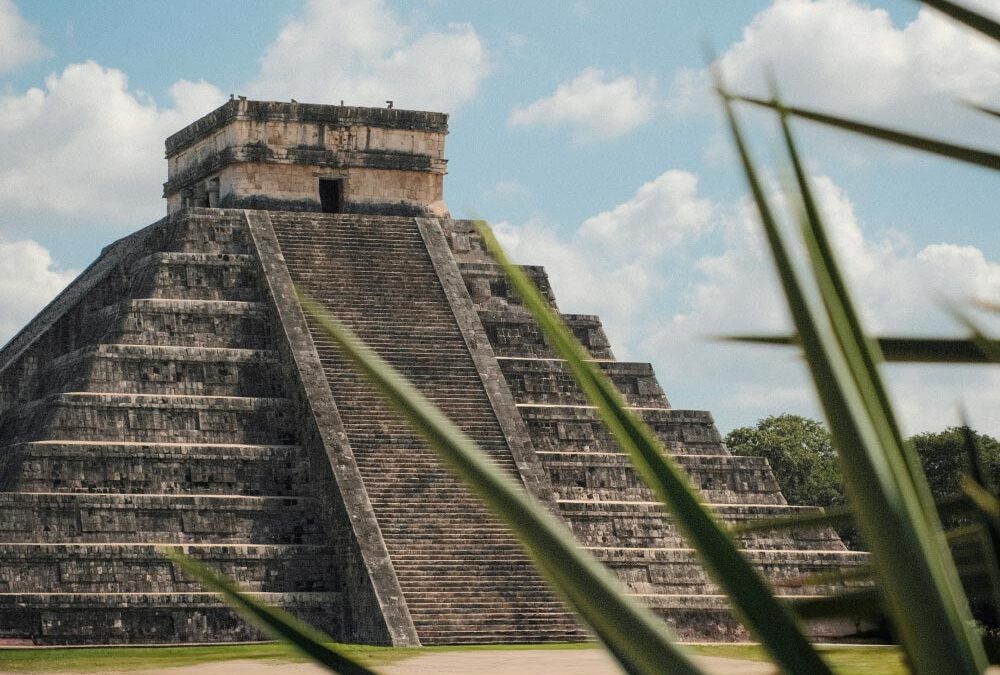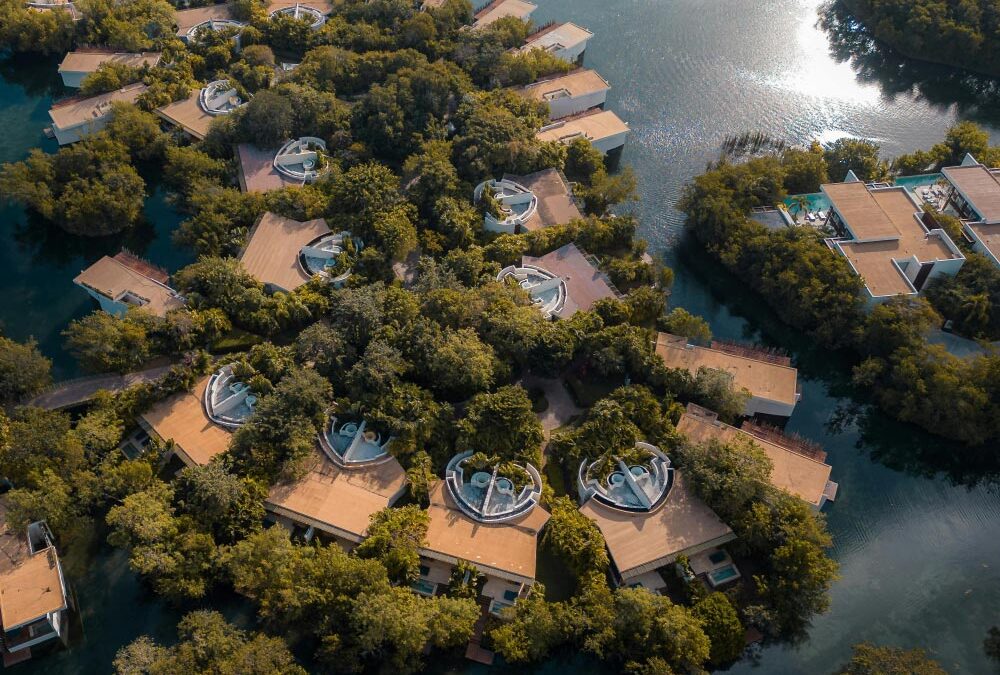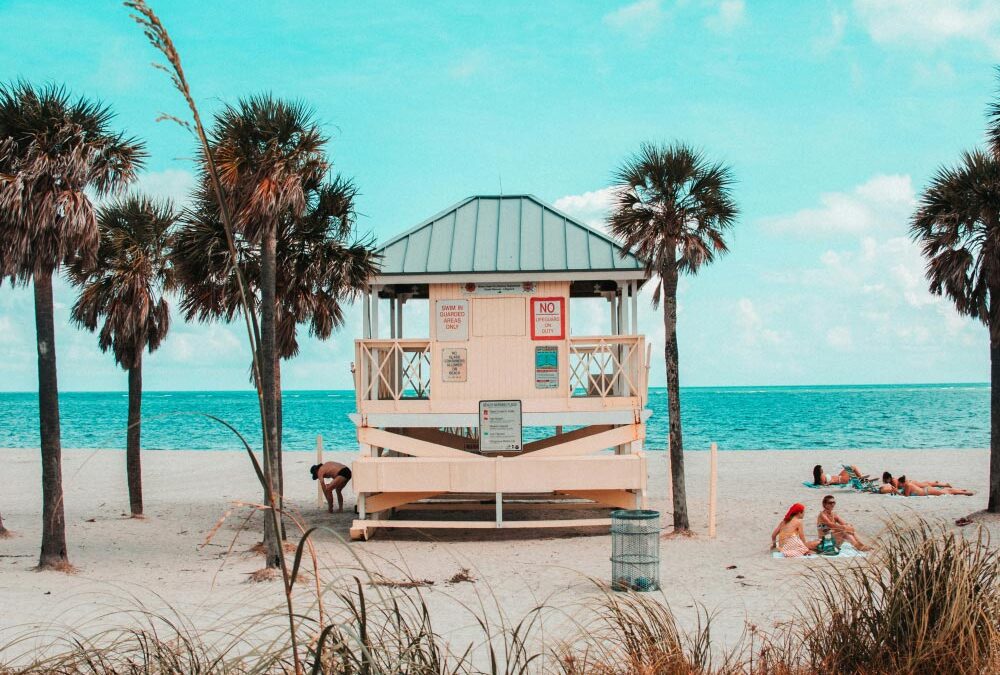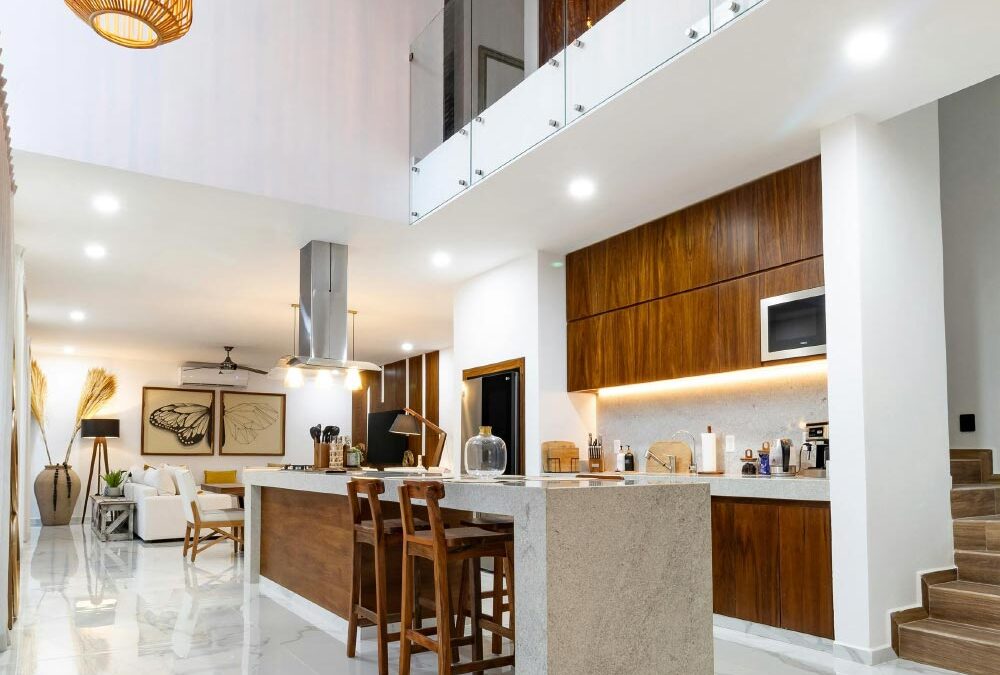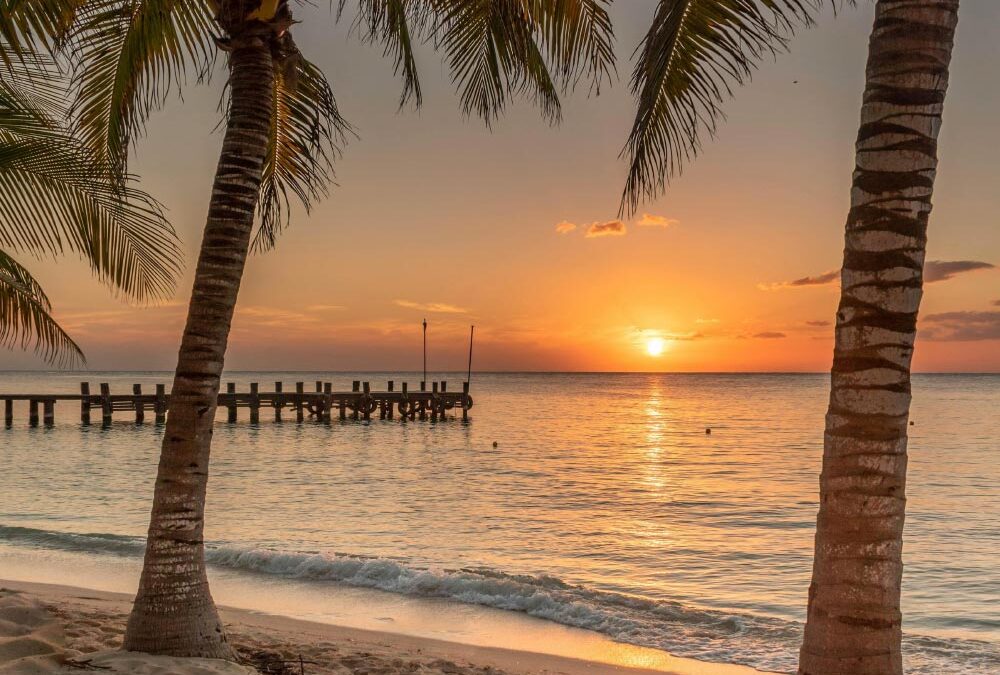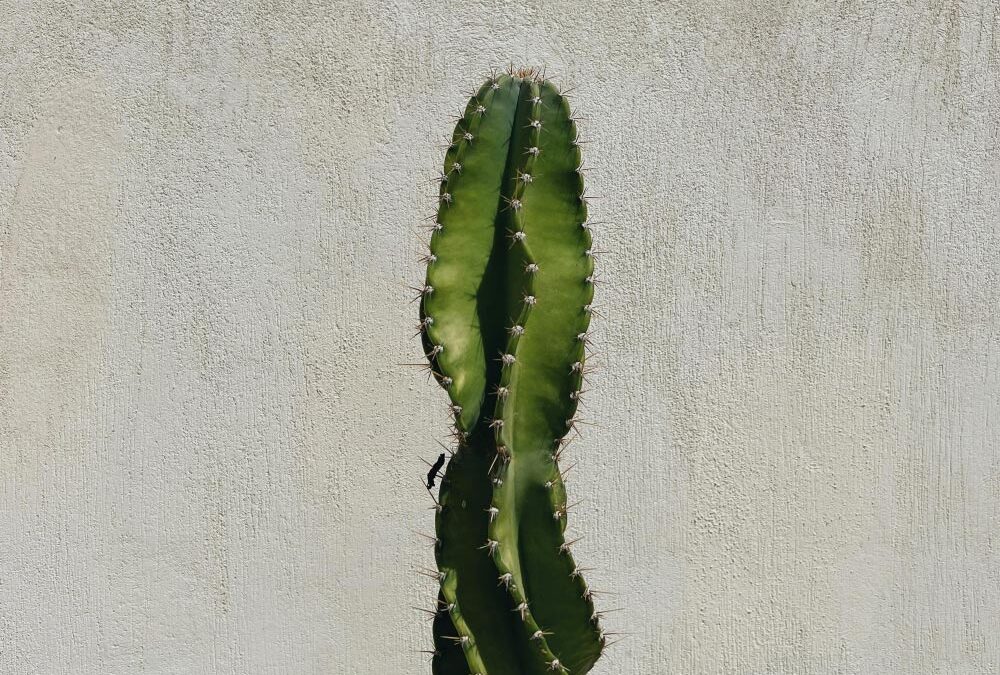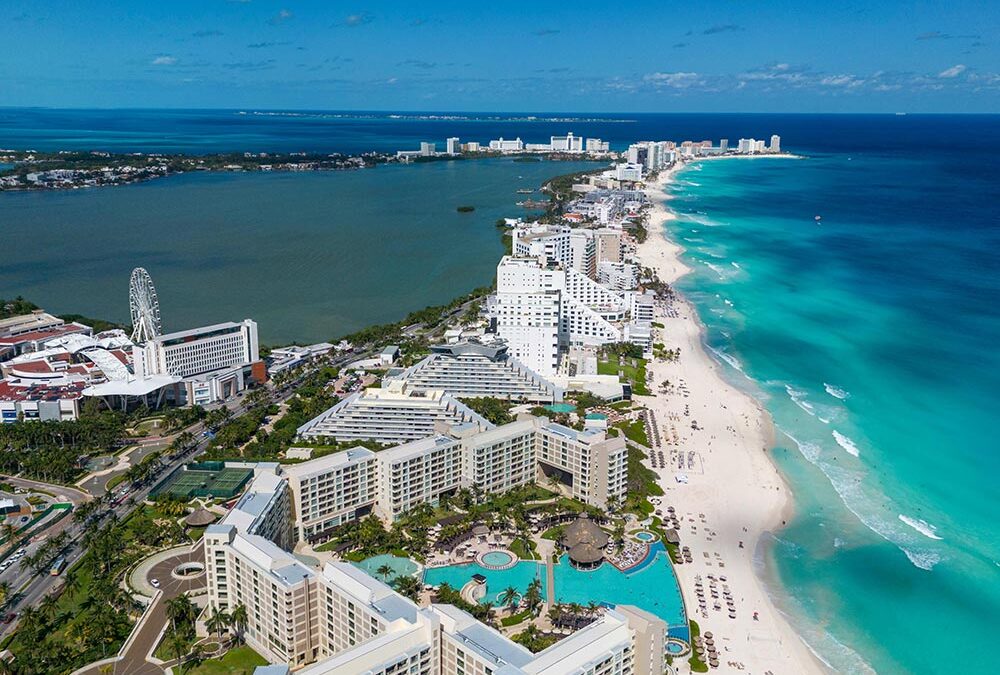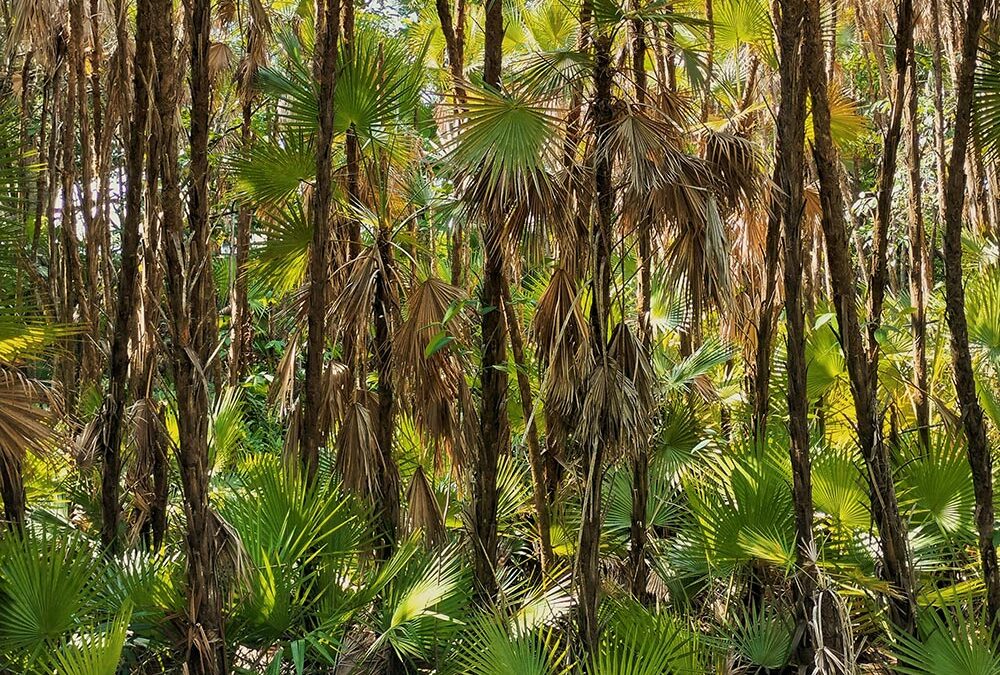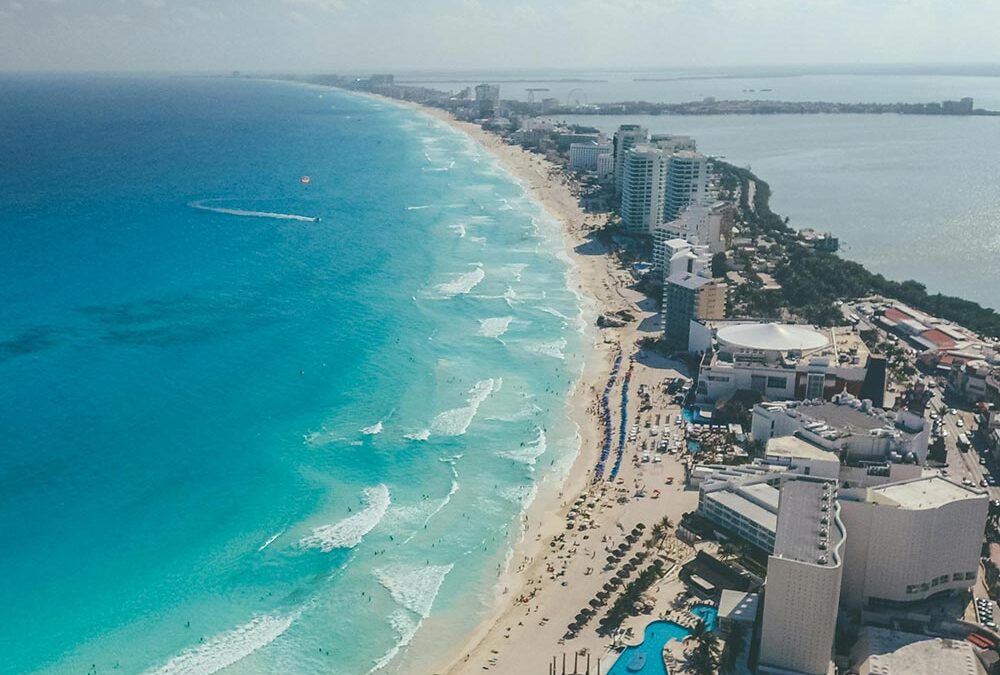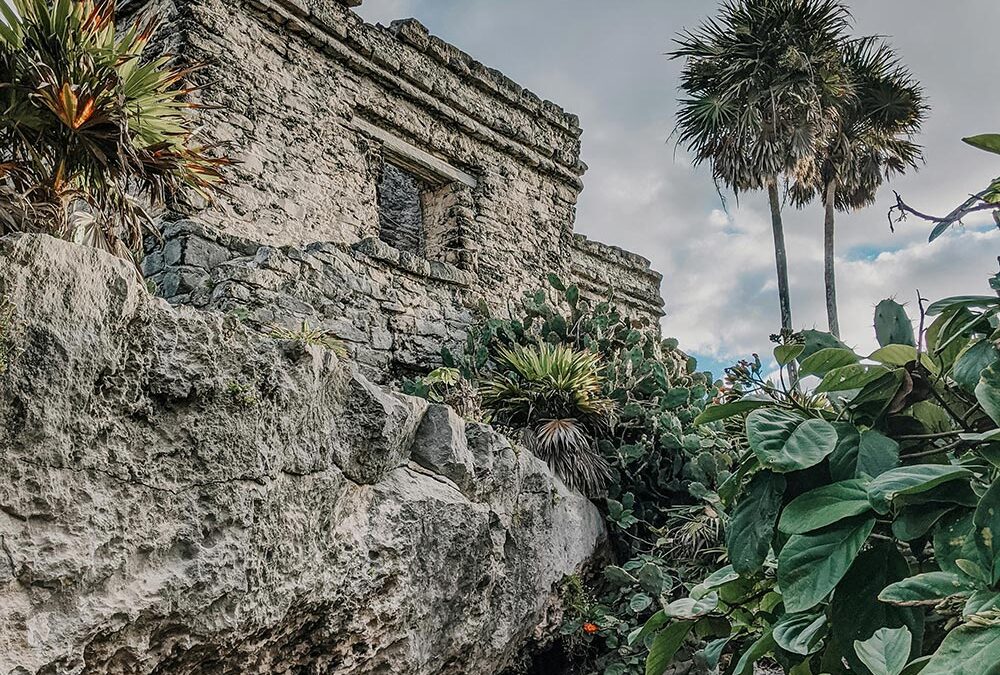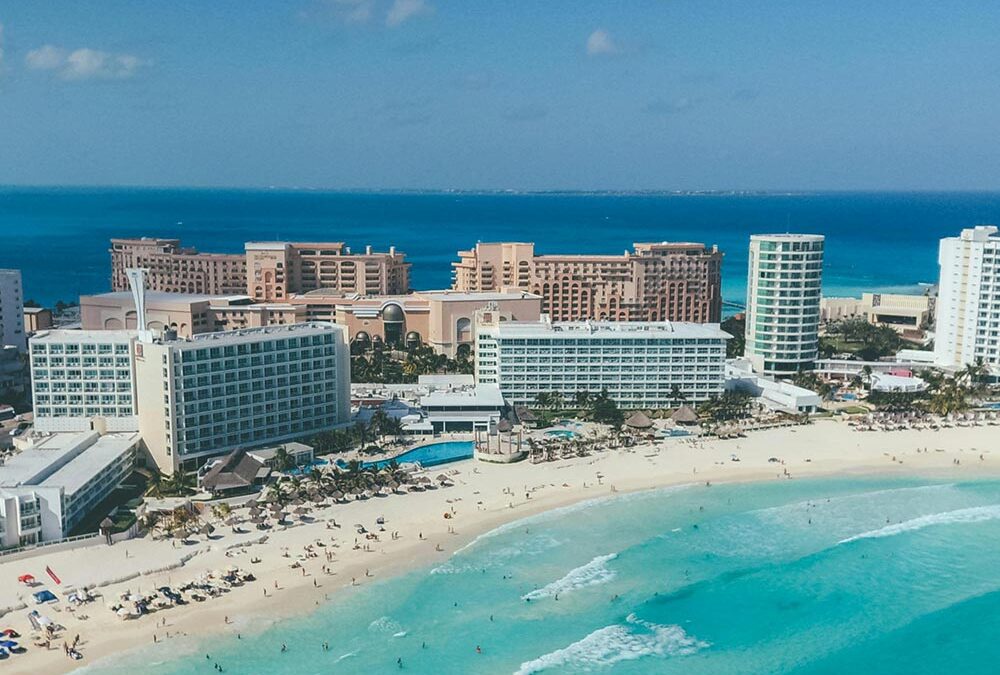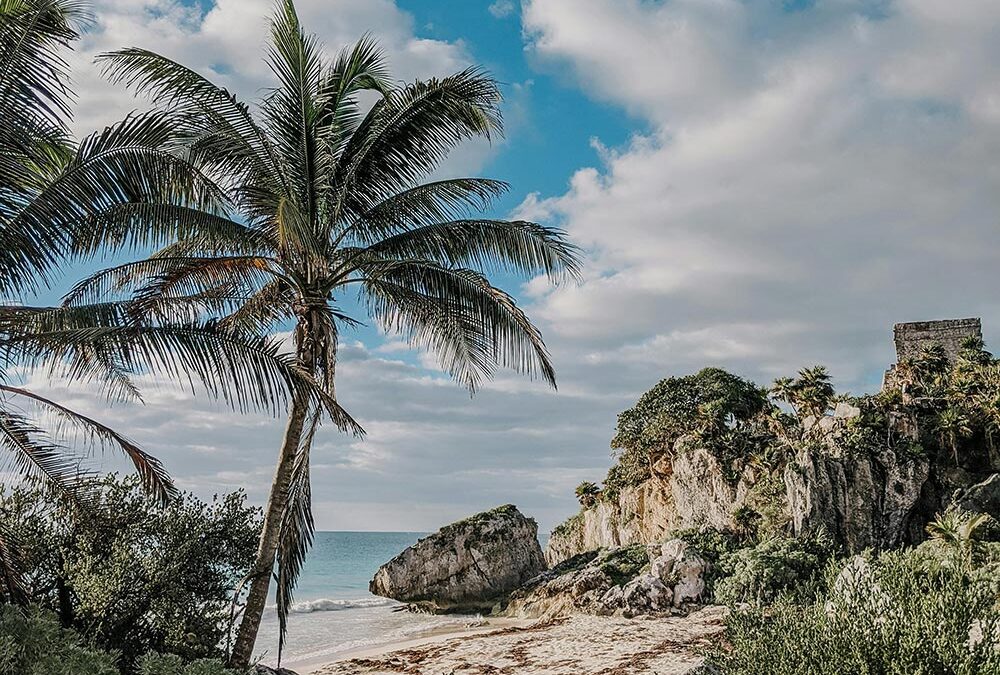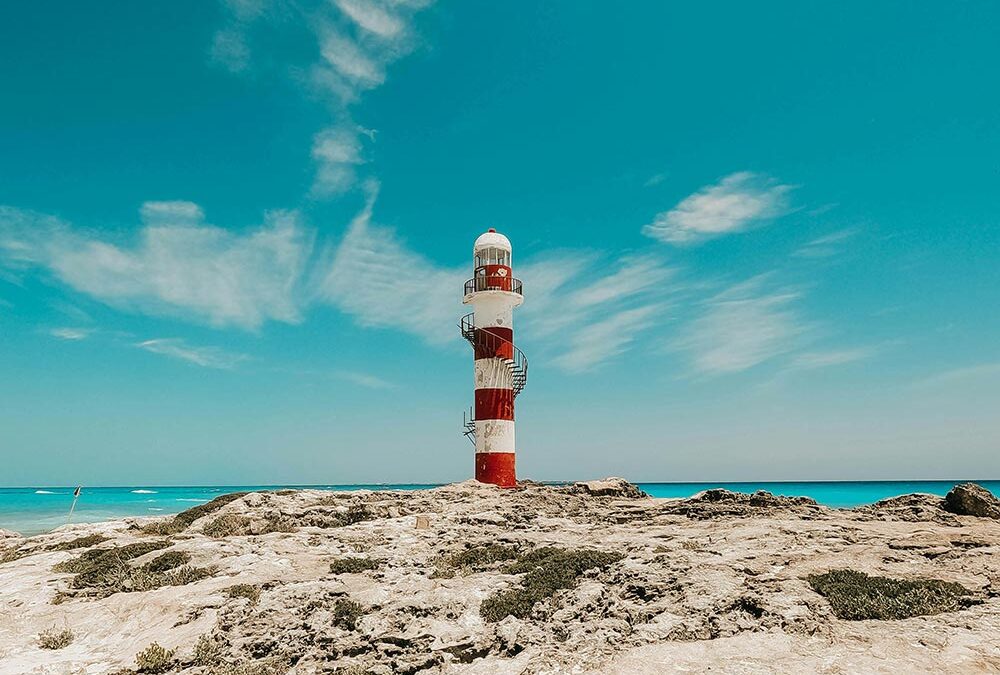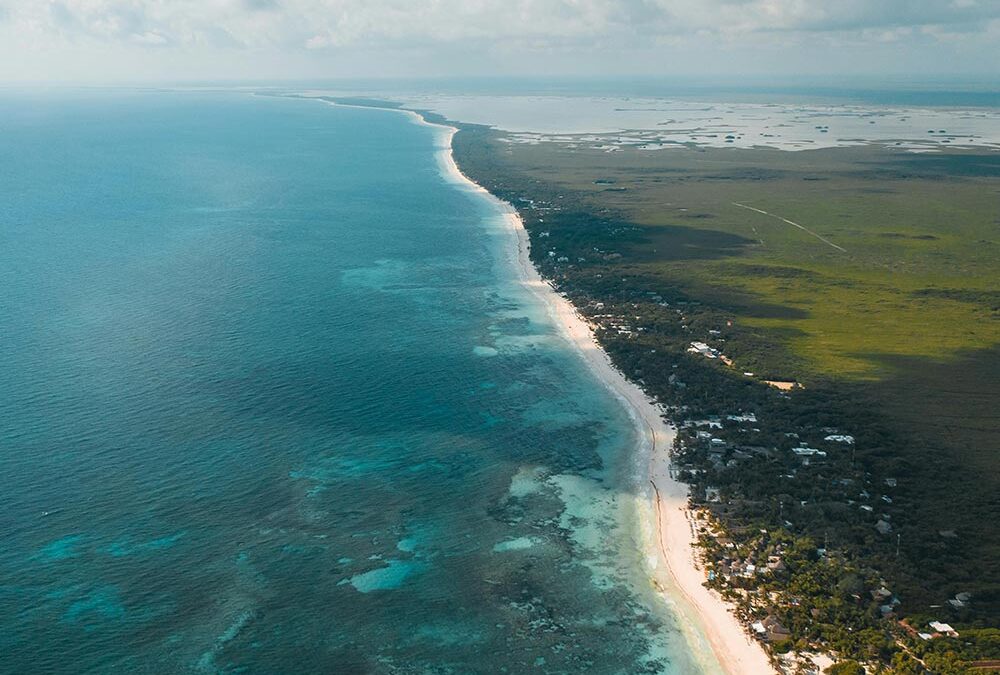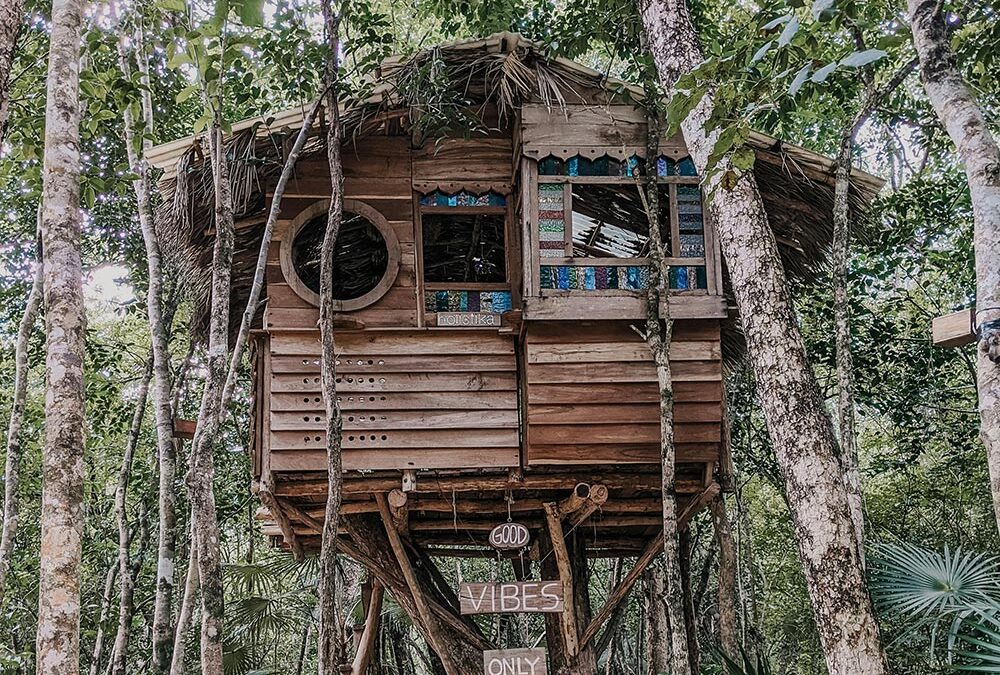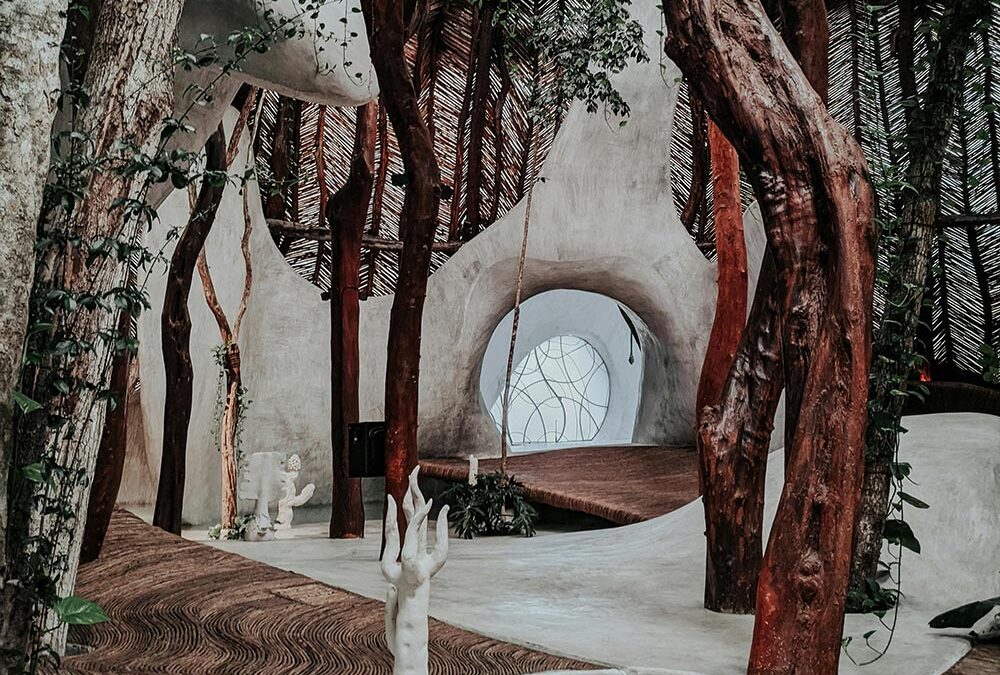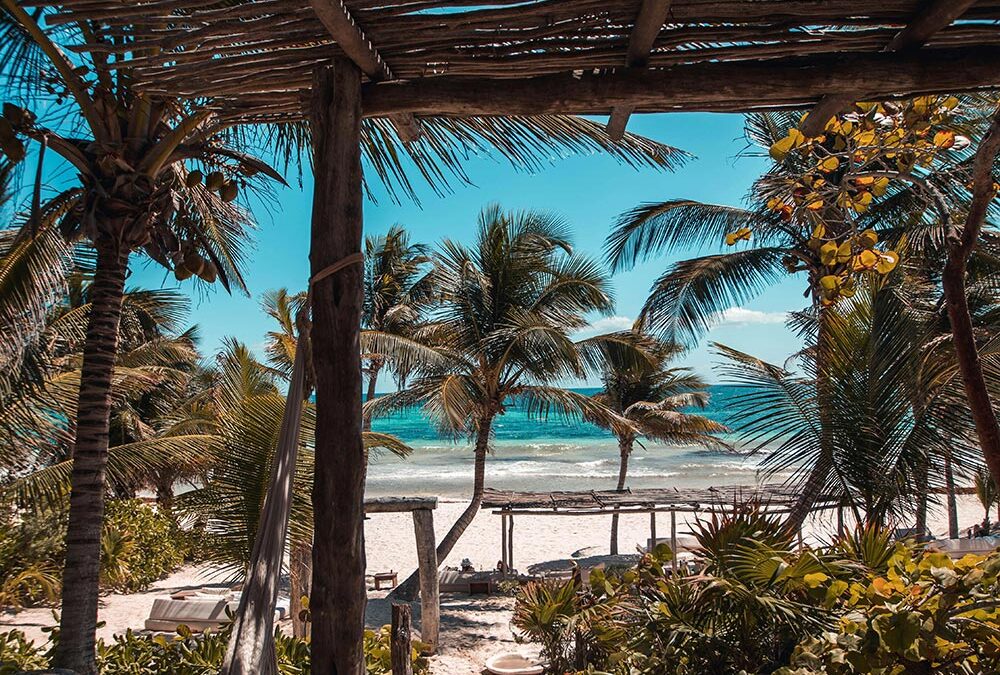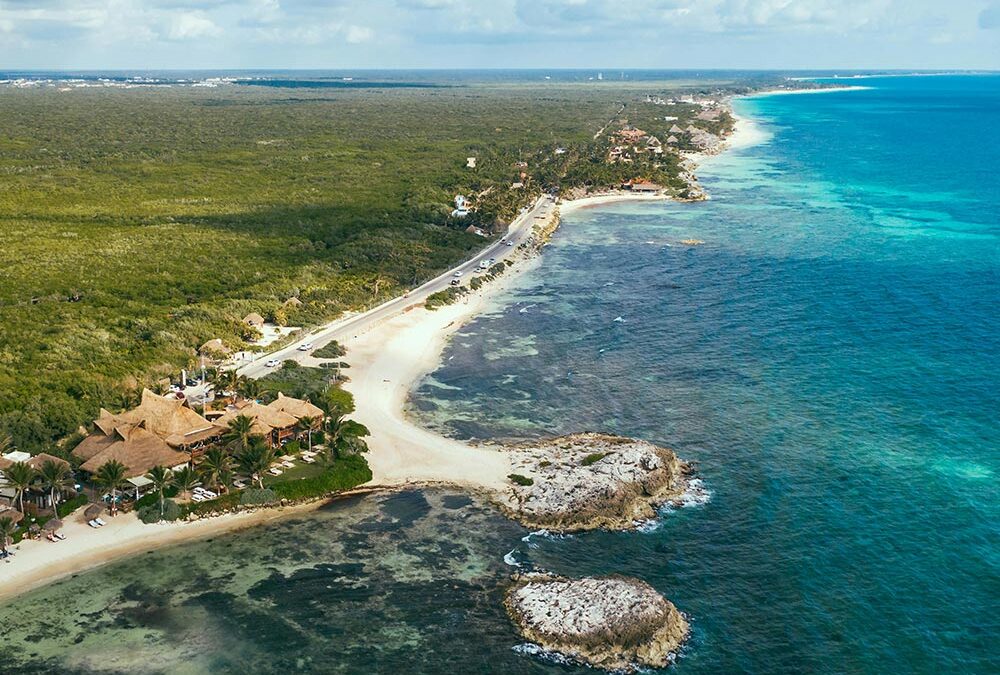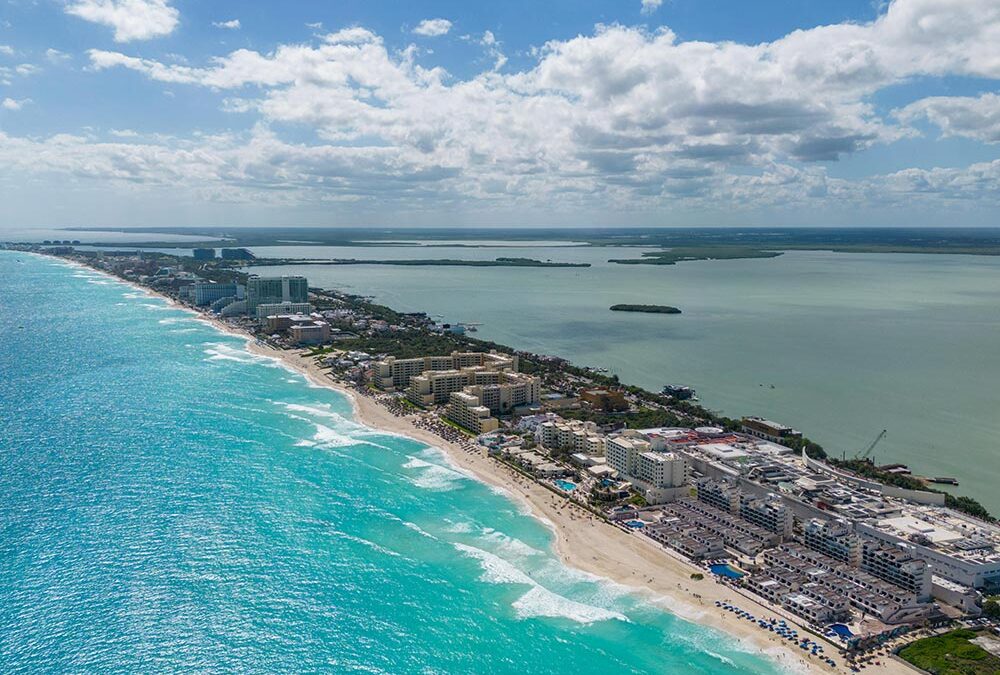Gold has long been celebrated as a hedge against inflation and a safe haven during economic crises. Yet, despite its historical appeal, gold often sits idle, waiting for market sentiment to determine its worth—offering neither active cash flow nor opportunities for strategic improvements. In a rapidly changing world, many investors yearn for an asset that not only maintains value but also grows in tangible, dynamic ways.
This is where Tulum, a rising coastal star on Mexico’s Yucatán Peninsula, sets itself apart. Once a well-kept secret, Tulum is now a hub of eco-conscious tourism and luxury developments. In a stark contrast to gold’s static nature, Tulum real estate delivers both steady rental income and strong appreciation potential, fueled by thriving demand and sustainable growth. This article explores why Tulum’s property market is emerging as a more active and rewarding place to park your capital—especially when contrasted with gold’s comparatively stagnant role.
We will dive into Tulum’s fundamentals, show how real estate fosters wealth through active income streams, and outline how gold, despite its historic accolades, often can’t keep pace with Tulum’s modern-day momentum. Our goal is to illustrate how “gold stays still, Tulum grows,” inviting investors to consider shifting toward a dynamic, income-generating opportunity that aligns with today’s global lifestyle trends.
Index of Content
- Gold’s Static Value: A Timeless but Inert Asset
- Tulum’s Dynamic Real Estate Market
- Active Income and Appreciation: The Tulum Advantage
- Financing Models & Investment ROI
- Managing Risks & Ensuring Stability
- Conclusion
- Case Study
- FAQs
Gold’s Static Value: A Timeless but Inert Asset
Why Gold Draws Investors
Gold has functioned as a universal symbol of wealth for centuries, protecting capital during times of turmoil. Investors often keep gold to counterbalance more volatile assets like stocks, believing its price will remain robust when markets dip. Its history and scarcity reinforce the notion that gold is a reliable store of value, offering security in an ever-changing economic climate. However, these traits have a hidden drawback: gold’s static nature means it doesn’t generate revenue, improve over time, or leverage value-add strategies. It simply sits and waits for its market price to rise.
Although gold can spike rapidly during crises, it can also stagnate once panic subsides, resulting in long periods with little to no growth. When comparing gold to an asset like Tulum real estate, the absence of passive or active income becomes glaring. Gold’s value is essentially locked in place until an investor decides to sell or a market event redefines its worth, creating a missed opportunity for proactive wealth-building.
- Gold’s core limitation is its inability to generate ongoing income—ownership hinges entirely on price fluctuations.
Tulum’s Dynamic Real Estate Market
Eco-Chic Demand Meets Luxury Development
Located along Mexico’s Caribbean coast, Tulum has emerged as a global hotspot for tourists and entrepreneurs alike. Its pristine beaches, Mayan ruins, and eco-conscious ethos attract an upscale demographic looking for boutique experiences and sustainable living. Over the last decade, government-led initiatives have modernized roads, utilities, and public services to handle this influx of visitors, all while preserving Tulum’s stunning environment.
The result? A real estate market that is as vibrant as it is lucrative. Demand outpaces supply in prime areas—particularly beachfront zones and amenity-rich neighborhoods. New developments often feature solar panels, water conservation systems, and locally sourced materials, aligning with Tulum’s brand as a high-end, eco-friendly retreat. For investors, these properties command premium rental rates and sustained appreciation. In essence, Tulum’s growth trajectory is propelled by consumer preferences for nature-immersive and culturally rich travel experiences, creating a stable backbone for long-term real estate value.
Infrastructure Growth and Investment Outlook
Infrastructure projects like the Maya Train and a proposed international airport reinforce Tulum’s connectivity to other major tourist destinations in the Yucatán Peninsula. Authorities also prioritize sustainable tourism, setting regulations on new construction to prevent overdevelopment. These initiatives maintain Tulum’s charm while ensuring the region’s capacity to welcome larger volumes of visitors.
As Tulum’s popularity grows, its hospitality sector expands in parallel—giving property owners consistent, year-round rental demand. This dynamic contrasts sharply with gold’s inertness. While the price of gold may be influenced by geopolitical news or currency shifts, Tulum real estate appreciates through ongoing improvements in infrastructure, branding, and cultural events that attract a global audience.
- Positioning your property near planned transport hubs, like the future airport, can optimize long-term rental yields.
Active Income and Appreciation: The Tulum Advantage
Short-Term Rentals vs. Gold’s Passive Holding
Unlike gold, Tulum real estate opens the door to recurring revenue streams. Property owners can rent to vacationers on platforms such as Airbnb and Vrbo, benefiting from Tulum’s elevated nightly rates—particularly during peak seasons. Despite an initial investment or mortgage, the strong demand often offsets carrying costs, resulting in net earnings that surpass what a purely static gold asset can provide.
Short-term rentals enjoy occupancy rates of 60-80% for well-managed properties, with nightly rents ranging from $150 to $500 in high season, depending on location and amenities. This level of demand, fueled by Tulum’s global reputation as an eco-luxury destination, is far more lucrative than waiting on gold prices to climb. Moreover, property owners have a say in marketing, pricing strategies, and property enhancements—each a chance to boost returns above the already favorable baseline.
Building Value Through Property Upgrades
Real estate offers another edge over gold: the ability to add value by upgrading or modifying the asset. In Tulum, implementing eco-friendly features like solar water heating or natural ventilation doesn’t just help the planet—it often raises the property’s market worth and daily rental rate. Such improvements also resonate with Tulum’s eco-conscious traveler demographic, who willingly pay more for sustainable lodgings.
Even minor cosmetic enhancements—a re-imagined outdoor lounge, high-end interior finishes, or thoughtful landscaping—can substantially increase a property’s ROI. Gold owners, meanwhile, have no comparable levers to pull. The metal’s market price is driven by external forces like global economic policy, monetary supply, or investor sentiment. Tulum property ownership, by contrast, enables you to refine and reshape your asset for better gains, ultimately delivering returns well beyond gold’s usually static nature.
- Introducing eco-friendly touches—like rainwater collection systems—can enhance marketability and justify higher rental rates.
Financing Models & Investment ROI
Leverage and Extended Payment Plans
Gold purchases usually require upfront capital unless one opts for less common margin trades. In contrast, Tulum real estate often comes with appealing financing structures. Many developers extend pre-construction deals with staggered payment schedules—requiring only 30% to 40% upfront—with the remaining amounts due at later project milestones. This arrangement creates leverage, enabling you to manage cash flow more effectively and buy into a property that appreciates during the construction phase.
Even post-completion, mortgage financing—through Mexican or international lenders—further amplifies gains. By financing part of the property, investors can allocate their capital to multiple units or diverse real estate segments (like condos and villas). This helps spread risk, all while securing income streams from multiple sources. Such forms of leverage can significantly magnify ROI, an advantage gold simply does not offer because it cannot produce an income that offsets borrowing costs.
Projected Returns in Tulum vs. Holding Gold
While gold can spike during crises, it also faces extensive flat spells or abrupt dips when investors shift away from “safe-haven” assets. Tulum real estate, by contrast, merges potential for capital growth—historically 8% to 15% annually for prime properties—with ongoing rental yields of 5% to 10%. These cumulative returns over a 5- to 10-year span can easily exceed the net gains from holding gold. By actively managing your property, you also retain the freedom to adapt to market changes—updating design, pursuing new rental models, or selling at an opportune moment.
- Set realistic rental occupancy goals based on comparable properties in Tulum’s market to gauge potential cash flow accurately.
Managing Risks & Ensuring Stability
Market Diversification and Tulum’s Global Appeal
Gold’s main appeal is safeguarding portfolios during market turmoil, but its performance can hinge on fickle macroeconomic trends. Tulum real estate, however, mitigates risk by attracting multiple traveler segments, from eco-tourists to retirees. Should one tourism niche falter temporarily, another often compensates, stabilizing overall occupancy rates. Moreover, Tulum’s year-round warm climate and focus on boutique developments enable the region to bounce back quickly from global downturns, as travelers prioritize well-being and distinctive experiences even in recessionary climates.
Tulum’s expanding expat community is yet another buffering factor. Digital nomads and remote workers, seeking cost-effective tropical lifestyles, often opt for medium-to-long-term leases, keeping rental demand stable even when short-term tourism ebbs. This diversified tenant base—vacationers, expats, and local professionals—helps ensure consistent rental income, which is far more predictable than gold’s spot price movements.
Legal Frameworks and Property Safeguards
Investors may worry about property rights and bureaucratic hurdles in overseas markets. However, Mexico’s regulations permit foreigners to own coastal property through a bank trust called a fideicomiso, which grants full ownership benefits. Many real estate agents and developers in Tulum collaborate closely with bilingual attorneys who walk foreign investors through these legal frameworks, ensuring each transaction is properly executed.
From a risk perspective, physical property may appear more “exposed” than gold, but when managed correctly, Tulum real estate boasts a tangible value supported by consistent demand. Meanwhile, gold’s intangible elements—like storage, insurance, and verification of authenticity—can be equally complex. By aligning with reputable developers, verifying titles, and properly insuring your Tulum property, you establish a level of security that surpasses relying purely on gold’s intangible market worth.
Conclusion
Gold has stood as a stable wealth protector for centuries, yet it remains static, yielding no ongoing returns or avenues for improvement. Tulum real estate, by contrast, exemplifies the active, income-generating future of modern investing. Through short-term rentals, savvy property upgrades, and alignment with infrastructure development, Tulum owners harness a multi-pronged approach to wealth-building—something gold, with its price bound to macroeconomic ebbs and flows, struggles to match.
Tulum’s transformation from rustic getaway to international eco-luxury hot spot reflects a dynamic market environment. The region’s limited buildable land, high traveler interest, and supportive government policies nurture an ecosystem ripe for consistent rental revenue and favorable appreciation. When you compare gold’s inert role in a portfolio with Tulum real estate’s ability to evolve, earn, and appreciate, the verdict becomes clear: investing where growth and value creation matter—like Tulum—can redefine what it means to safeguard and expand your wealth for the long term.
Case Study: From Idle Gold to Active Tulum Investments
Camila, a 52-year-old business consultant, had historically relied on gold as a buffer against volatile markets. Despite gold’s stable reputation, she noticed how infrequently her holdings contributed to active growth. Encouraged by Tulum’s rising profile, Camila sold a portion of her gold reserves and purchased a pre-construction condo in Aldea Zamá at a discounted price of $210,000, paying a 40% down payment over the development period.
By the time the condo was completed, it appraised at $265,000, reflecting immediate equity gains of over 25%. Listing the unit on short-term rental platforms, Camila enjoyed occupancy rates averaging 70% during high season, netting annual returns around 8% even after management and maintenance fees. Comparing this performance to her remaining gold holdings—which remained virtually unchanged for that same duration—Camila concluded that Tulum real estate provided a far more dynamic way to safeguard and grow her capital. She now plans to reinvest her rental income into a second property, further diversifying her portfolio and enhancing her potential monthly cash flow.
FAQs
1. Can Tulum’s market sustain its current growth rates?
While no market is immune to cyclical changes, Tulum’s sustainability focus, limited developable land, and expanding tourist segments suggest continued long-term growth. Infrastructure projects and consistent marketing of Tulum’s eco-luxury brand reinforce these positive trends.
2. What about liquidity? Isn’t it easier to sell gold than real estate?
Gold is indeed highly liquid, but Tulum properties also command robust resale demand thanks to strong market fundamentals. Strategic marketing and choosing prime locations can expedite property sales, offsetting some of gold’s immediate liquidity advantage.
3. How do short-term rentals in Tulum compare to other tourist spots?
Occupancy rates and nightly rates in Tulum generally exceed or match those of similarly popular beach destinations. Tulum’s eco-chic positioning and year-round warm climate help maintain demand, especially among high-income travelers seeking unique experiences.
4. Do foreigners have full legal rights to own Tulum real estate?
Yes. Through a bank trust (fideicomiso) administered by a Mexican bank, foreigners enjoy all ownership rights, including selling, renting, and improving the property. This secure framework is standard practice for coastal properties.
5. How does Tulum real estate mitigate global economic downturns?
Tulum’s diversified visitor base—from backpackers to affluent travelers—cushions against steep drops in any single segment. The region’s eco-luxury positioning and smaller-scale developments often remain attractive even in tighter economic climates, helping preserve property values and rental income.
